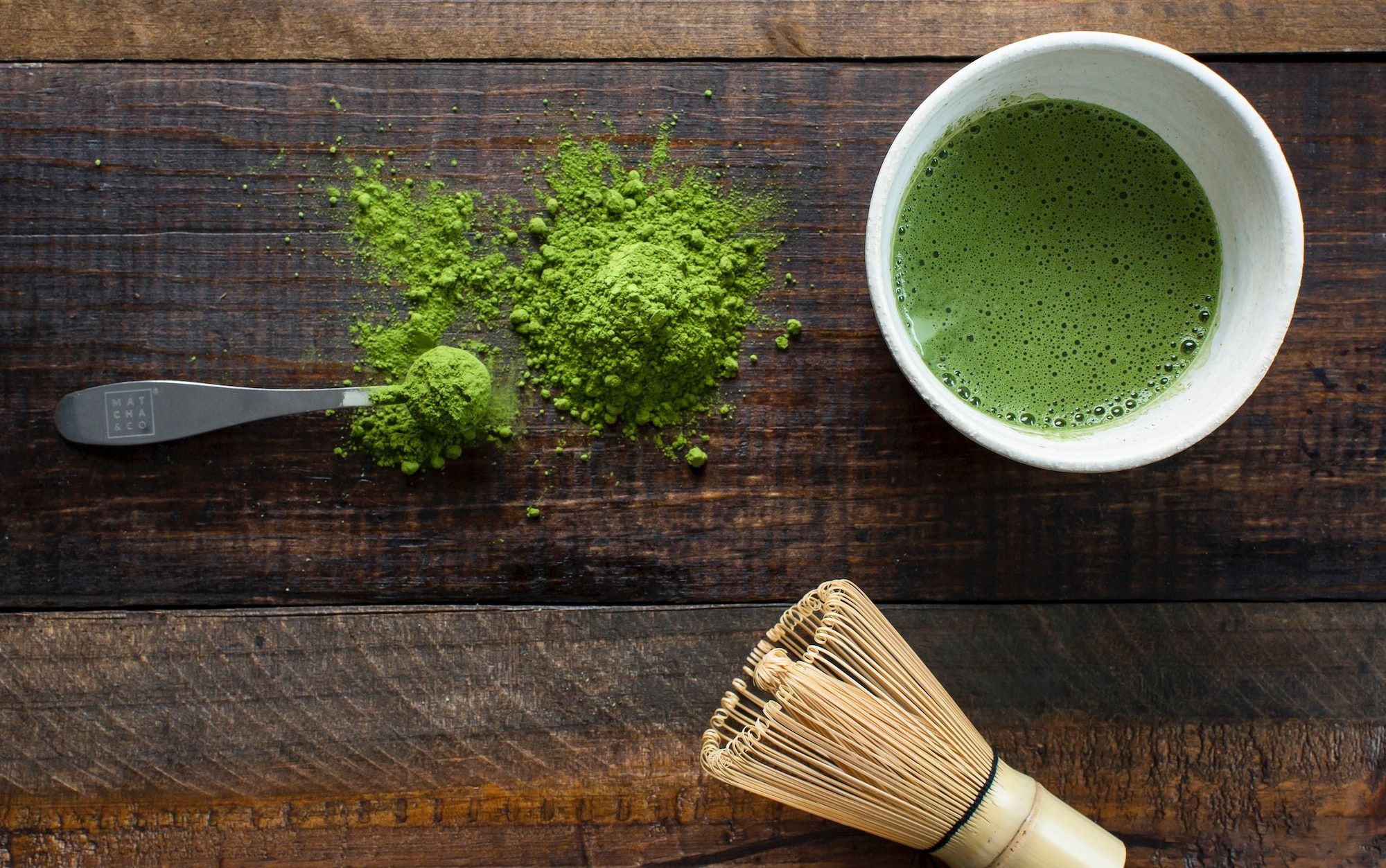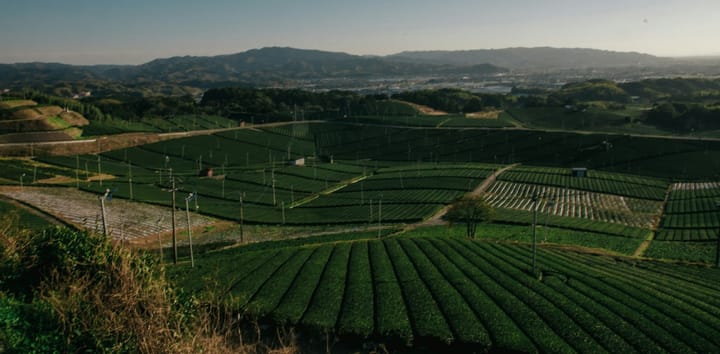Ultimate Guide to Top Tier Green Tea Varieties
The Green Tea Benefits and Differences Explained

The Western world, with its storied history of robust, fermented black teas, presents a stark contrast to the delicate artistry of green tea cultivation that's been nurtured in East Asia, particularly in Japan. This divergence in tea culture is as pronounced as the difference between a coffee connoisseur's appreciation for varied brews and a tea master's reverence for the subtleties of green tea.
While China has curated a select array of green teas, it is Japan that stands out as the vanguard in the realm of green tea exploration, deeply rooted in the important cultural tradition of the Japanese tea ceremony. This ceremonial practice not only celebrates the art of tea-making but also embodies the deep respect and mindfulness inherent in Japanese culture.
What is Green Tea?

Green tea is a type of unfermented tea derived from the Camellia sinensis plant. Distinct from black and oolong teas, green tea's leaves are quickly steamed or pan-fired after harvesting to prevent oxidation.
This process preserves the leaves' vibrant color and rich antioxidants, resulting in a beverage that's both subtly aromatic and beneficial for health. Consumed for centuries in Asia, green tea is celebrated for its nuanced flavors, ranging from grassy to sweet, depending on its variety and preparation.
Here Are Some of The Most Expensive Green Tea Varieties in The World:
1) Gyokuro (Japan)
Origin: This is a premier shade-grown Japanese green tea, primarily from the regions of Uji, Fukuoka, and Shizuoka.
Specialty: The tea bushes are shaded for several weeks before harvesting, which boosts the chlorophyll levels and gives Gyokuro its distinct rich flavor and deep green color.
How it's Made: Tea bushes are covered with bamboo mats or cloth to block out sunlight for 20-30 days before harvesting. This shading process boosts chlorophyll levels and reduces tannin.
Flavor Profile: Gyokuro has a sweet taste, with notes of seaweed and an umami-rich depth. It's often likened to the taste of fresh green vegetables or even broth due to its savory elements.
2) Matcha (Japan)
Origin: Derived from the same plant as Gyokuro, Matcha is a powdered green tea predominantly from Uji in Kyoto.
Specialty: Only the finest leaves are chosen, which are then ground into a fine powder. This means you consume the entire tea leaf, leading to a richer flavor and higher nutrient intake.
How it's Made: The finest tea leaves, once shaded like Gyokuro, are ground into a fine powder after de-stemming and de-veining.
Flavor Profile: Matcha offers a unique balance of creaminess, umami, and a slightly bitter undertone. Its flavor can range from subtly sweet to richly grassy, depending on its grade and preparation.
3) Longjing or Dragon Well (China)
Origin: Grown primarily in the West Lake region in Hangzhou, Zhejiang province of China.
Specialty: Recognized for its jade green color, flattened shape, and toasted chestnut taste. Authentic Longjing tea is hand-roasted and has a distinct terroir flavor.
How it's Made: Handpicked leaves are pan-fired to stop the fermentation process, then hand-pressed against hot woks, giving them their flat appearance.
Flavor Profile: Dragon Well is smooth and vibrant with a nutty, toasted undertone. Some varieties also exhibit buttery or vegetal flavors.
4) Biluochun (China)
Origin: Native to the Dongting mountains of Jiangsu Province.
Specialty: This tea has a curled leaf resembling a snail, which unfurls when steeped.
How it's Made: The tea is plucked early in the morning and then allowed to wither. The withered leaves are then rolled, which gives them their snail shape, and pan-fired.
Flavor Profile: It exudes a fresh, fruity aroma with delicate notes of flowers and fruit, especially apricot and plum, with a lingering sweet finish.
5) Anji Bai Cha (China)
Origin: Found in Anji County, Zhejiang Province.
Specialty: Although "Bai Cha" means "white tea", this is a green tea variety. It's renowned for its pale green leaves and rich amino acid content.
How it's Made: Picked in the early spring, the leaves undergo a series of meticulous processes: withering, fixing, rolling, and drying.
Flavor Profile: Its liquor is pale but packed with a sweet, mellow flavor. Subtle floral hints make this tea smooth and refreshing.
6) Shincha (Japan)
Origin: First harvest of the Japanese tea season, sourced from various parts of Japan.
Specialty: Fresh, vibrant flavor profile that embodies the taste of spring. Its short harvest season contributes to its high price.
How it's Made: As the first flush tea of the season, it's harvested early, steamed to prevent oxidation, rolled, and then dried.
Flavor Profile: Shincha boasts a perfect balance of sweetness and astringency. It's fresh, grassy, and often contains subtle oceanic notes, capturing the essence of spring.
7) Uji Hikari (Japan)
Origin: A special cultivar from the Uji region, Kyoto.
Specialty: Rare and often reserved for competitions and special occasions. Noted for its brilliant green color and umami-rich flavor.
How it's Made: Much like other Japanese teas, it undergoes a process of steaming, rolling, shaping, and drying. Its uniqueness comes from the specific Uji cultivar and terroir.
Flavor Profile: This tea is deeply aromatic and has an exceptional umami richness, often accompanied by a pleasant vegetal backdrop.
8) Taiping Houkui (China)
Origin: From Huangshan in Anhui Province.
Specialty: Features long, flat leaves and has won numerous awards for its refreshing taste.
How it's Made: The long leaves are withered, roasted, rolled (giving them their flat shape), and then baked.
Flavor Profile: Taiping Houkui is known for its orchid aroma, mingled with hints of fruits. It offers a lingering sweetness that's neither too light nor too bold.
How To Brew Premium Green Tea Perfectly?
Brewing expensive green tea perfectly requires a combination of precision, quality equipment, and an understanding of the specific type of green tea in question. While there are variations for each kind of green tea, here's a general guideline to brewing a perfect cup:
- Water Quality:
Use soft, filtered water. The quality of the water will directly impact the taste of the tea. Avoid tap water if it's chlorinated or has impurities. - Water Temperature:
Green tea is sensitive to high temperatures, which can make it bitter.
Generally, aim for a temperature between 160°F (70°C) to 185°F (85°C). Delicate teas like Gyokuro might need even cooler water. - Tea Quantity:
Use about 1 to 2 teaspoons of tea leaves for every 8 ounces (240 ml) of water. This can be adjusted based on personal preference. - Preheat Your Teapot and Teacup:
Pour a small amount of hot water into the teapot and teacup, swirl it around to warm them, and then discard the water. This ensures that the tea stays at a consistent temperature during steeping. - Add Tea Leaves:
Place the tea leaves into a teapot. - Pour the Water:
Once the water reaches the desired temperature, pour it over the tea leaves. - Steeping Time:
This can vary based on the specific green tea, but as a general guide:
i) Sencha: 1-2 minutes
ii) Gyokuro: 1-3 minutes (sometimes even less for the first steep)
iii) Dragonwell/Longjing: 2-3 minutes
Note: Over-steeping can lead to bitterness. It's essential to find the right balance that suits your taste. - Pouring:
Pour the tea into cups in small amounts at a time, alternating between cups. This ensures that each cup has an equal strength of flavor. - Multiple Infusions:
Expensive green teas can often be brewed multiple times. Each subsequent infusion may require slightly longer steeping times. - Enjoy:
Sip slowly and savor the nuanced flavors and aromas. Notice how the flavor might change between infusions.
Tips:
- Always store expensive green tea in a cool, dark place, preferably in an airtight container, to maintain its freshness.
- Use a good quality teapot, preferably made of clay or cast iron, which maintains consistent heat.
- Adjust the above guidelines based on personal taste and the specific recommendations for the tea you're brewing.
Remember, brewing tea is as much an art as it is a science. With practice, you'll find the perfect balance that suits your palate.
What is The Difference Between Western Black Tea, Chinese Tea and Green Tea?
1) Western Black Tea:
Processing: Fully oxidized, which gives it a dark color.
Flavor: Typically robust, malty, and astringent. Popular examples include Assam, Darjeeling, and Ceylon teas.
Usage: Often consumed with milk or sugar in Western countries. Examples include English Breakfast and Earl Grey.
2) Chinese Tea:
Processing: Chinese teas encompass a wide range, from unoxidized (green teas) to fully oxidized (black teas, which are called "red teas" in China) and everything in between.
Flavor: Varies widely depending on the type. For instance, Chinese green teas (like Longjing) can be nutty and fresh, while oolongs (like Tie Guan Yin) can range from floral to roasted. Chinese black teas (like Keemun) tend to be mellower than their Western counterparts.
Usage: Traditionally consumed without additives, often using multiple short infusions to extract a variety of flavors.
3) Green Tea:
Processing: Unoxidized. Leaves are heated shortly after harvesting to retain their green color and prevent enzymatic oxidation. This can be done through steaming (common in Japan) or pan-firing (common in China).
Flavor: Typically fresh, grassy, vegetal, and sometimes with umami or sweet undertones. Flavor nuances vary depending on the region and specific processing techniques.
Usage: Consumed without additives. The brewing temperature and time are often lower and shorter, respectively, than for black teas to avoid excessive bitterness.

Summary
It's important to note that the cost of these teas can vary widely based on the grade, harvest season, and where they are purchased. True tea enthusiasts often say the experience of savoring these exquisite teas, understanding their origins, and appreciating the craftsmanship that goes into producing them is well worth the premium price.


